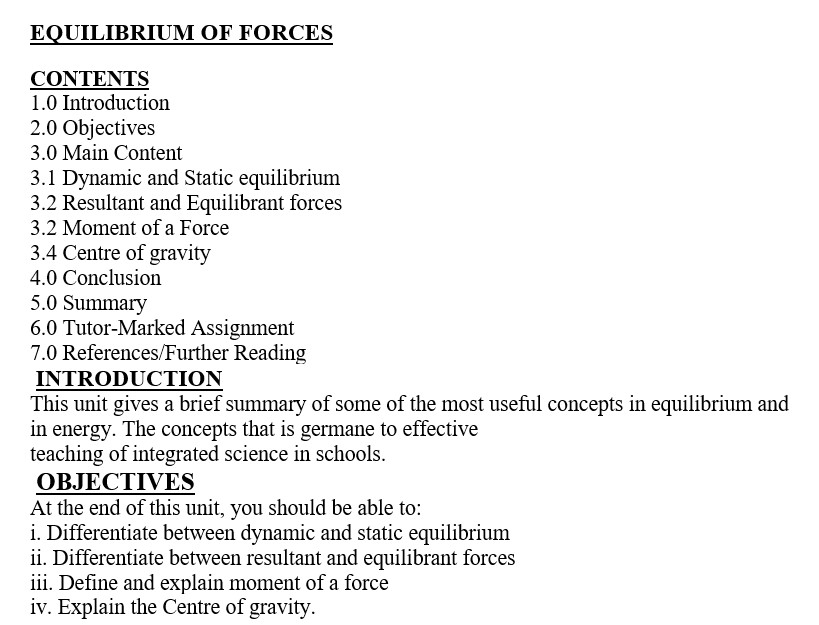Basics of Force Equilibrium
Summary:
This Basics of Force Equilibrium note presents fundamental concepts of force equilibrium essential for teaching integrated science. Equilibrium occurs when there’s no net force acting on an object in any direction. Static equilibrium is achieved when forces acting on an object are zero, and it doesn’t move or rotate. A dynamic equilibrium, on the other hand, is observed when an object moves with constant velocity in a straight line or rotates with constant angular velocity about a fixed axis. The resultant force, a single force with the same effect as two or more forces combined, is calculated using the parallelogram law of vectors. The equilibrant force balances all other forces, equal magnitude but opposite in direction to the resultant force. The moment of a force signifies the turning effect of the force about a point, and the principle of moments states that for a body in equilibrium, clockwise moments equal anticlockwise moments about any point on the body. The centre of gravity is the point through which the line of action of the body’s weight passes, regardless of the body’s position, appearing to concentrate the entire body weight.
Excerpt:
Basics of Force Equilibrium
EQUILIBRIUM OF FORCES
CONTENTS
1.0 Introduction
2.0 Objectives
3.0 Main Content
3.1 Dynamic and Static Equilibrium
3.2 Resultant and Equilibrant Forces
3.2 Moment of a Force
3.4 Centre of gravity
4.0 Conclusion
5.0 Summary
6.0 Tutor-Marked Assignment
7.0 References/Further Reading
INTRODUCTION
This unit summarises some of the most useful concepts in equilibrium and energy. The concepts that are germane to effective teaching of integrated science in schools.
OBJECTIVES
At the end of this unit, you should be able to:
- Differentiate between dynamic and static equilibrium
- Differentiate between resultant and equilibrant forces
iii. Define and explain the moment of a force
- Explain the Centre of gravity.
MAIN CONTENT
1. The concepts of Equilibrium
An object is in equilibrium when there is no net force acting on a body in any direction.
2. Static Equilibrium
This means that the forces acting on the body along any direction is zero. The body does not move or rotate and has the resultant kinetic or Dynamic.


Reviews